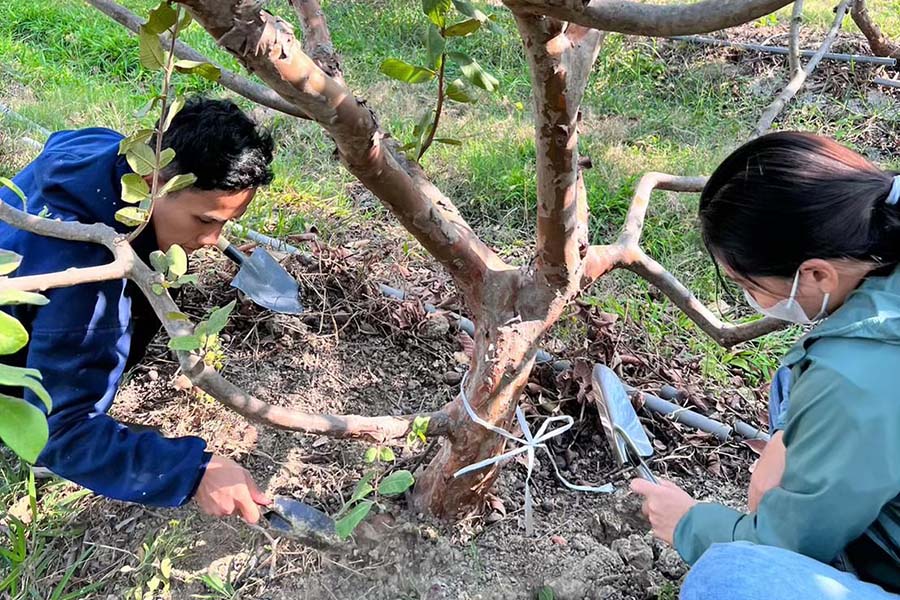With the world pushing for net-zero carbon emissions by 2050, Taiwan has made policy announcements and taken actions which echo the global trend. As Taiwan’s premier agricultural university, the century-old National Pingtung University of Science and Technology (NPUST) has recognized its particular responsibility to conduct research on agricultural carbon reduction. Currently, a research team working under Associate Professor Yu-Ting Wu of the NPUST Department of Forestry is cooperating with the government to implement “Net Zero” objectives by improving soil carbon sinks (i.e. yellow carbon) and developing “carbon-negative” farming methods (where carbon removed exceeds carbon emitted).
After conducting a series of experiments on electron transport chains and cultivation methods, photosynthetic bacteria Rhodopseudomonas sp. isolates PYX C11, PYX 12, PYX 24 and PYX 39, which have high carbon sequestration potential, were detected in the water samples. These photosynthetic bacteria are purple nonsulfur bacteria which use solar energy to produce organic matter from carbon dioxide, water, inorganic salts and other compounds in the air and surrounding environment for their own metabolism and growth. Photosynthetic bacteria have such functions as carbon fixation, nitrogen fixation, denitrification and sulfide oxidation—and they play an important role in natural carbon, nitrogen and sulfur cycles. The research team applied the isolated photosynthetic bacteria to rice fields and found that the rice in the experimental groups which used photosynthetic bacteria grew better than the control group which did not. When comparing experimental groups, it was found that the isolates PYX 12 and PYX C11 had the best results, followed by isolates PYX 39 and PYX 24. These photosynthetic bacteria with high carbon sequestration potential can promote the growth of rice while efficiently capturing carbon dioxide in the air.
Meanwhile, the research team went further by establishing a positive correlation between organic carbon, total glomalin glycoprotein content and arbuscular mycorrhizal fungus spore content in organically cultivated orchard soil, and screened out the arbuscular mycorrhizal fungi, which has a high potential to secrete glycoproteins. Arbuscular mycorrhizal fungi are fungi that live symbiotically with plant roots and which can promote plant growth, prevent root diseases, and help reduce other harms. Additionally, the glomalin glycoprotein produced by the hyphae of the arbuscular mycorrhizal fungi can stabilize soil agglomeration and organic matter and increase yellow carbon. At the 2015 COP Climate Summit in Paris, the “4Per 1000 Initiative” was proposed, advocating that the world increase the organic carbon content at a soil depth of 30-40 centimeters by 0.4% every year in order to offset annual emissions. The techniques developed by the research team offers a potential means for rice farmers to make excellent progress on this question.
The research team has also actively developed circular economy based techniques in the past, using agricultural waste materials (such as discarded mushroom bags and discarded branches trees) to make organic compost. The organic fertilizer manufacturing process, which was approved for a Republic of China invention patented (No. I709549), is able to increase organic carbon in soil by 6%. Associate Professor Yu-Ting Wu from the Department of Forestry said: ” although Taiwan’s current organic agriculture does not use pesticides or chemical fertilizers, farming models could greatly improve by reducing carbon dioxide emissions. Since organic farmers already add organic fertilizers to the soil to help with crop growth, by adding organic matter, they can increase the organic carbon content in the soil.”

